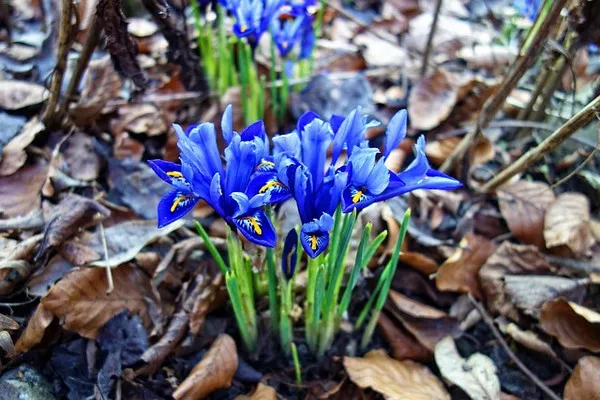Flowers have captivated human beings for centuries with their vibrant colors, intricate patterns, and alluring fragrances. They play a significant role in various aspects of human life, from decorating spaces to conveying emotions through bouquets. Yet, have you ever wondered about the nutritional requirements that sustain the beauty and vitality of these botanical wonders? Contrary to popular belief, flowers do not consume food in the same way animals do. Instead, they have a unique set of nutritional needs that contribute to their growth and overall health.
See Also: The Benefits of Using Eggshells for Flowering Plants
Flower Nutrition: A Different Paradigm
Plants, including flowers, are autotrophic organisms, meaning they can synthesize their own food through a process called photosynthesis. While animals rely on consuming other organisms for sustenance, plants have evolved to harness energy from the sun, carbon dioxide, and water to produce glucose and oxygen. This process is facilitated by specialized structures called chloroplasts, which contain chlorophyll—a pigment responsible for capturing light energy.
See Also: Flowers That Flourish with Coffee Grounds as Fertilizer
Sunlight: The Ultimate Source of Energy
Sunlight is the primary source of energy for flowers. Through photosynthesis, flowers capture light energy using chlorophyll and convert it into chemical energy stored in glucose molecules. This energy fuels various physiological processes within the flower, including growth, reproduction, and defense mechanisms against pests and diseases.
Water: The Elixir of Life
Water is essential for a flower’s survival, serving as a medium for transporting nutrients from the soil to different parts of the plant. Roots play a crucial role in absorbing water and minerals from the soil, which are then transported via specialized vascular tissues—xylem and phloem. Water not only provides structural support but also aids in maintaining turgidity, a critical factor in upholding the flower’s shape and appearance.
Minerals: Nourishing Growth and Development
In addition to water, flowers require essential minerals obtained from the soil to support their growth and development. These minerals include macronutrients such as nitrogen, phosphorus, and potassium, as well as micronutrients like iron, zinc, and copper. Nitrogen is crucial for leaf and stem growth, phosphorus contributes to flower and fruit development, and potassium aids in overall plant health and disease resistance. These minerals are absorbed by the plant’s roots and transported throughout the plant via the xylem and phloem.
Soil: The Storehouse of Nutrients
The soil serves as a reservoir of nutrients that are essential for flower growth. However, not all soils are created equal, and the availability of nutrients can vary widely. Soil quality, pH level, and organic matter content all influence the availability of nutrients to the plant. Flowers grown in nutrient-rich soils tend to exhibit healthier growth, richer colors, and more vibrant blooms.
Carbon Dioxide: Fueling Photosynthesis
While sunlight and water provide the energy needed for photosynthesis, carbon dioxide (CO2) is the key ingredient required for the synthesis of glucose. Flowers absorb CO2 from the air through tiny pores on their leaves called stomata. Inside the leaf cells, CO2 is combined with water in the presence of light and chlorophyll to produce glucose and oxygen through a complex biochemical process.
Oxygen: A Byproduct with Purpose
While oxygen might not be a nutrient for the flower itself, it is a significant byproduct of the photosynthesis process. The release of oxygen into the atmosphere not only contributes to the planet’s oxygen supply but also plays a vital role in the flower’s own respiration process. Just as animals require oxygen to break down glucose and generate energy, flowers and plants utilize oxygen for cellular respiration, a process that aids in the release of energy stored in glucose molecules.
Nutritional Challenges and Adaptations
Flowers, like all living organisms, face challenges when it comes to obtaining and utilizing nutrients. External factors such as soil quality, water availability, and environmental conditions can impact a flower’s ability to thrive. To address these challenges, flowers have developed a range of adaptations. For instance, some flowers have evolved specific root structures that allow them to thrive in nutrient-poor soils, while others have developed mechanisms to attract pollinators that inadvertently aid in nutrient transfer.
Conclusion
Flowers are remarkable creations that rely on a unique set of nutritional requirements to flourish and grace the world with their beauty. Unlike animals, they harness the power of sunlight, water, and carbon dioxide to synthesize their own food through photosynthesis. Essential minerals obtained from the soil, along with water and carbon dioxide, contribute to various physiological processes within the flower, from growth an d development to defense mechanisms. Understanding the nutritional needs of flowers not only deepens our appreciation for their elegance but also underscores the intricate balance of life in the natural world. As we continue to explore the marvels of botanical life, let us remember that the vitality of these delicate blossoms lies in their ability to harness the energy of the sun and the resources of the Earth to create artistry that captivates our senses.


